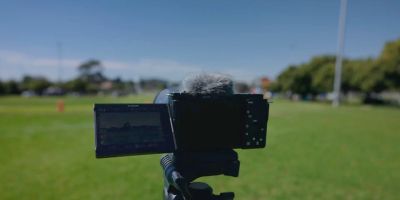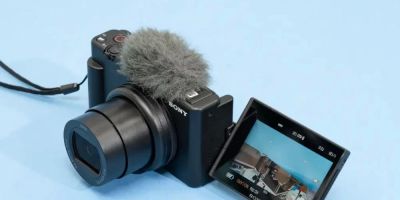
- why-choose-specialized-gear-for-low-light-photography
- essential-camera-features-for-low-light-shooting
- lenses-that-make-a-difference-in-low-light-conditions
- supporting-accessories-for-enhanced-low-light-performance
- real-world-examples-and-tips-from-professional-photographers
1. Why Choose Specialized Gear for Low-Light Photography
Low-light photography presents unique challenges that ordinary equipment often struggles to overcome. When shooting in dim environments such as night scenes, indoor events, or astrophotography, the limitations of your gear can significantly affect the quality of your images. The best gear for shooting low-light photography is specifically designed or selected to maximize light capture, reduce noise, and maintain sharpness under these tough conditions.
Understanding why specialized gear matters helps set realistic expectations. For example, shooting handheld in low light without the right tools often leads to blurry or grainy photos. Therefore, choosing the right camera, lens, and accessories can dramatically improve your results and expand creative possibilities. At Photo Studio, you can explore an array of equipment tailored for these demanding situations, ensuring you find the ideal match for your style and needs.
2. Essential Camera Features for Low-Light Shooting
Not all cameras are created equal when it comes to low-light performance. Several key features distinguish the best gear for shooting low-light photography:
2.1 Sensor Size and Sensitivity
Full-frame sensors are generally preferred because their larger surface area gathers more light, reducing noise and improving image clarity. Cameras with high ISO sensitivity (e.g., ISO 3200 or above) allow you to shoot in darker environments without excessive grain.
2.2 Image Stabilization Technology
In-body image stabilization (IBIS) or lens-based stabilization helps compensate for hand movements, enabling longer shutter speeds without blur. This is invaluable when shooting handheld in low-light scenarios.
2.3 Fast and Accurate Autofocus
Low-light situations can challenge autofocus systems. The best gear features sensitive autofocus modules capable of locking focus quickly and precisely even when lighting is minimal.
Choosing a camera that combines these features provides a solid foundation for excellent low-light photography. Whether you’re capturing moody street scenes or delicate indoor moments, this gear enhances your creative control.
3. Lenses That Make a Difference in Low-Light Conditions
The lens you pair with your camera is just as important as the camera body itself. Certain lenses are renowned for their ability to perform exceptionally well in dim light:
3.1 Wide Aperture Lenses
Prime lenses with apertures like f/1.4, f/1.8, or f/2.8 allow significantly more light to hit the sensor, enabling faster shutter speeds and better subject isolation through shallow depth of field.
3.2 Fast Zoom Lenses
While primes are excellent, modern zoom lenses with constant wide apertures (e.g., 24-70mm f/2.8) offer versatility without compromising on light gathering capability, perfect for unpredictable shooting conditions.
3.3 Quality Optics and Coatings
High-quality glass and anti-reflective coatings reduce flare and ghosting, improving contrast and sharpness. This is especially beneficial when shooting in challenging lighting with artificial sources.
At Photo Studio, you can find a range of lenses optimized for low-light photography, whether you seek the signature bokeh of a prime or the flexibility of a high-performance zoom.
4. Supporting Accessories for Enhanced Low-Light Performance
Beyond cameras and lenses, the right accessories can elevate your low-light photography:
4.1 Tripods for Stability
A sturdy tripod is indispensable for long-exposure shots, allowing you to capture night skies, light trails, or indoor scenes without motion blur.
4.2 External Lighting and Reflectors
Portable LED panels or small flashes can provide additional light when natural illumination is insufficient, enabling creative lighting setups without harsh shadows.
4.3 Remote Shutter Releases
To avoid camera shake, especially during long exposures, using a remote shutter release or intervalometer helps keep images crisp and sharp.
Combining these accessories with the right camera and lens setup creates a comprehensive toolkit for mastering low-light environments. For tailored recommendations and product availability, Photo Studio offers expert advice and the best equipment suited to your shooting style.
5. Real-World Examples and Tips from Professional Photographers
Consider the experience of Jane, a professional photographer specializing in urban night photography. She attributes her stunning cityscape images largely to her choice of gear—a full-frame mirrorless camera paired with a 35mm f/1.4 lens. Jane emphasizes how the wide aperture lets her capture vibrant, detailed scenes even when streetlights are the only source of illumination.
Similarly, David, an astrophotographer, relies heavily on a robust tripod and remote shutter to shoot clear photos of the Milky Way. His workflow involves using cameras with excellent high-ISO performance and manual lenses with fast apertures. These choices reduce noise and maximize star visibility, resulting in breathtaking night sky images.
Learning from such examples highlights the importance of investing in the best gear for shooting low-light photography, adapted to your specific subject and style. Whether it’s landscapes, portraits, or events, careful equipment selection paired with technique unlocks creative potential.
For those looking to upgrade or start their journey in low-light photography, Photo Studio is an excellent resource. With knowledgeable staff and a wide selection, you can find everything from beginner-friendly setups to professional-grade equipment tailored for exceptional low-light performance.





